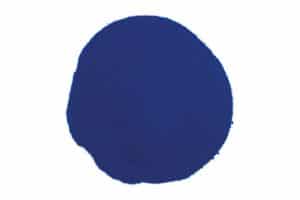Description
- Mica-like hard slate, colored purple by iron and manganese, especially opaque by
titanium.intermediate stage of ocher and radiolarites. This shade was much used in
Italian painting and also north of the Alps. The Asam brothers painted vestments of angels
and saints in many churches with this shade. Although the original locality is not known to
this day, despite many investigations, the mineral seems to occur in various places in
practically indistinguishable quality. We found this color material first in the south of
France at the Côte d’Azur, meanwhile the material comes from Switzerland between Chur
and Zurich. There is also a green stone there, which behaves quite similarly to the violet
hue. The violet, this green and the corresponding Melser gray result in an excellent
matching color tone. This is based on a mineralogical peculiarity, because the mica, due
to its high proportion of titanium, obtains a higher opacity than is otherwise usual with
earth colors.
Mica hard Mels slate green is a natural product, a natural green earth.
In addition to slate violet, there is also a hard, green slate mineral found in Mels. Geological history often produces minerals that may differ in color, but have very similar chemical compounds and properties. The slate green pigment produced from it is brighter than a green earth. It is a cool, slightly greyish green hue. The combination of Mels slate violet, green, and grey is perfect for large fresco paintings on ceilings and walls, e. g. to depict angels and the lives of saints. Since the eye can detect characteristics beyond the plain hue of a pigment, earth colors from the same locality can produce matching tonalities, which viewers perceive as resonant. Therefore, the three colored minerals from Mels together form a special color harmony. Their uniqueness results from a combination of glimmer and titanium, which produces pigments of higher covering power than other earth pigments.
- Lightfastness – medium: 8 (1 is bad, 8 is best)
- Lightfastness – thinned: 8 (1 is bad, 8 is best)
- Lightfastness – concentrated: 8 (1 is bad, 8 is best)
- Suitability: Acrylics, Cement / Tadelakt, Lime / Fresco, Oil, Silicate binder, Waterglass, Tempera, Watercolor / Gouache
- Colors: Green
- Forms: powder
- Solubility in water: insoluble




